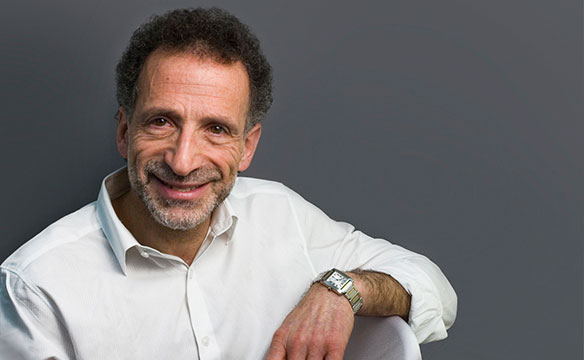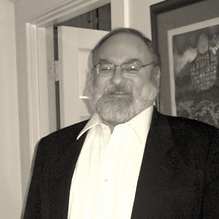 A dead or decayed body
A dead or decayed body Questions of Ritual purity and Impurity, Tahor and Tamei, received a great deal of attention in the Talmud – much more so then the Laws of Shabbat or Kashrut Laws. The Rabbis developed intricate systems of rules of purity with no practical usefulness. Questions of purity were an issue during temple times but when the Talmud was redacted the Temple had been destroyed for around 500 years or so (as much time as separates us from Columbus); a subject studied diligently with a great deal of intricacy was, and still is useless. There were no Red Heifers and most Jews were living in the Diaspora and all Jews were ritually impure.
To explore this, let’s take a walk thru Chapter 7 of the Tractate Nazir, which I was recently studying, and see the mindset of the Rabbis.
It was known that touching a corpse (dead body) caused one to become ritually impure (Tamei). However, actually touching a corpse isn’t necessary to became impure; just being under the same roof, or in certain cases under an overhanging branch or a projecting wall is enough. It’s as if the impurity of the corpse permeates the area all around it, and taints all with which it comes into ‘contact’.
So the Talmud questions,” How much of a corpse does it take to transmit impurity?” Here is where the text gets into queasy graphic descriptions of various forms of putrefaction.
Say that a dead body has begun to liquefy: Does the fluid from a decayed corpse also transmit impurity? How can one tell that the fluid is actually flesh, and not the remains of spittle or phlegm, which do not transmit Tamei? The answer, Rabbi Yirmeya says in the Talmud, has to do with whether the liquid subsequently congeals. If it does, it is from the corpse, and thus unclean; if it doesn’t, it is probably a bodily fluid, and thus clean.
Animal corpses follow a different protocol. An animal carcass imparts “severe impurity” only while it’s still considered fit for human consumption. Once it has decayed to the point of being inedible for people but still be appetizing to dogs, it imparts “light impurity.” And when dogs would not touch it, the carcass ceases to transmit impurity at all. Then the Talmud starts discussing animals that have putrefied, animal fat that has turned to liquid in the sun, and much more – not for those with queasy stomachs.
The Rabbis ask what happens with a dead body that has turned entirely to dust. According to the Mishnah, a “full ladle of dust” is the amount required to transmit impurity – tumah; the Talmud defined this as the amount you can hold in your two cupped hands. However the Talmud continues, by the time a corpse has turned to dust, it is hard to tell whether the dust contains just the body, or whether matter from other sources has gotten mixed in – for instance, the clothes it was buried in, or wood from its coffin, and the Talmud informs us of a principle “that mixtures do not transmit Tumah.” As a result, the Talmud concludes that dust is Tamei only if it comes from a corpse that was “buried naked in a marble coffin or on a stone floor,” so there is no other source of dust in its vicinity.
The question of mixtures raises a number of other theoretical issues. What exactly constitutes a mixture when it comes to corpse dust? What if you bury two people in the same grave? You might think that this would be twice as unclean as a single corpse, but the Talmud rules otherwise: because mixtures do not transmit Tumah, a mixture of the dust of two bodies therefore does not transmit impurity.
Pushing the question further, the Rabbis ask about borderline cases. Ordinarily, the hair and nails of a corpse are impure as long as they are attached to the body. What if you cut off a corpse’s hair and buried it alongside the body- , would this then constitute a mixture? What about a woman who dies while pregnant, do she and her fetus constitute two separate corpses, or is the fetus considered part of the mother, like an internal organ?
This question, raised in BT Nazir 51:B, would seem to have major implications for our own debates about when a fetus is considered a living being. The Rabbis of the Talmud dig and push the boundaries to attempt to get to the ultimate truth of the penultimate principle of an issue, and its exacting, precise regulation. Ever more complex scenarios and legal conundrums quite removed from reality are elaborated in the process of elucidating precise detailed legal definitions.
The logic of the Talmud often seems convoluted and intimidating, every page alludes to customs and political arrangements which are terribly obscure and have little relevance to our world. But what fun to study its intricacies. The people represented in it were intelligent, articulate and dedicated to the remarkable project of helping an ancient tradition survive and thrive. The arguments stimulate, the logic and disciplined sharpness is at times breathtaking, their language and wit gives pleasure, and the immensity of their achievement provokes awe.
It has been instrumental in our survival over the millennia.
Isaac Pollak is the Rosh/Head of a Chevrah Kadisha on the upper East Side of Manhattan, NYC, and has been doing Taharot for about 4 decades. He is fascinated by and a student of customs and history concerning the Chevrah Kadisha and Jewish burial and mourning ritual. He is an avid collector of Chevrah Kadisha material cultural items, with over 300 historical artifacts in his own collection. He serves as chairperson of the Acquisition Committee for Traditional Material Culture at the Jewish Museum in NYC, and is CEO of an International Marketing Company. He is a student, participant, and lecturer in Gamliel Institute courses.

[Ed. Note: another article by the same author is to be found HERE. You can also search for other articles in this blog HERE. — JB]
_____________________
Gamliel Courses
The next course in the cycle of core courses offered by the Gamliel Institute will be Course 4 – Nechama/Comfort. It will be offered online during the Fall from October 9th to December 25th on Tuesday evenings, for 90 minutes each week for 12 weeks. The classes will begin at 5 pm PST/8 pm EST. Primary instructors will be Dan Fendel and Edna Stewart, with guest instructors.
Registration is now open – click here.
The course planned for Winter 2019 is Course 2 – Chevrah Kadisha: Taharah & Shmirah. Plan ahead! You can register online now.
___________
Gamliel Café
Gamliel Students are invited to a free informal online session, held monthly. On the third (3rd) THURSDAY of each month, different person(s) will offer a short teaching or share some thoughts on a topic of interest to them, and those who are online will have a chance to respond, share their own stories and information, and build our Gamliel Institute community connections. This initiative is being headed up by Rena Boroditsky and Rick Light. You should receive email reminders monthly. The next scheduled session of the Gamliel Café is October 18th. More details will be sent out soon.
If you are interested in teaching a session, you can contact us at rboroditsky@jewisgh-funerals.org, rlight@jewish-funerals.org, or info@jewish-funerals.org.
_______________
Gamliel Continuing Education Courses
Gamliel students should be on the lookout for information on a series of Gamliel Continuing Education Courses, advanced sessions focusing in on different topics. These will usually be in groups of three ninety minute sessions (three consecutive Wednesdays) offered roughly twice yearly, with different topics addressed in each series. The goal is to look at these topics in more depth than possible during the core courses. The first course took place in Fall 2017, focusing on Psalms, and the second was on The World to Come and the Zohar.
The next course will be November 28th, December 5th, and December 12th. We will continue to look at death as seen in the Zohar, taught by Beth Huppin.
Registration is required, and there will be a tuition charge of $72 for each three session series. Contact us for information, by email info@jewish-funerals.org, or call 410-733-3700, or simply register online at www.jewish-funerals.org/gamreg/.
You can also register for prior courses and access them via recording.
____________________
Taste of Gamliel Series
The 2018 Taste of Gamliel series has concluded, but it is not too late if you want to access the recordings. You can Register for the 2018 series, You’re Gonna Miss Me When I’m Gone: Jewish Practices of Remembrance, or any of the series from prior years, and view them in recordings. There are usually five sessions in a series, and each session is approximately 90 minutes.
The 2019 series is being planned now. Registration for Taste of Gamliel is mandatory to access the sessions. The Registration fee of $36 for each series helps us defray the out of pocket costs.
Those registered will be sent the information on how to connect to the sessions. To register, click here: register.
_____________________
DONATIONS
Donations are always needed and most welcome to support the work of Kavod v’Nichum and the Gamliel Institute, helping us to bring you the annual conference, offer community trainings, provide scholarships to students, refurbish and update course materials, expand our teaching, support programs such as Taste of Gamliel, the Gamliel Café, and the Gamliel Continuing Education courses, provide and add to online resources, encourage and support communities in establishing, training, and improving their Chevrah Kadisha, and assist with many other programs and activities. There is a matching donation program in progress so your dollars go further. See the website for details.
You can donate online at http://jewish-funerals.org/gamliel-institute-financial-support or by snail mail to either:
Kavod v’Nichum, or to The Gamliel Institute,
c/o David Zinner, Executive Director, Kavod v’Nichum,
8112 Sea Water Path,
Columbia, MD 21045.
Kavod v’Nichum and the Gamliel Institute] are recognized and registered 501(c)(3) organization, and donations may be tax-deductible to the full extent provided by law. Call 410-733-3700 if you have any questions or want to know more about supporting Kavod v’Nichum or the Gamliel Institute.
You can also become a member (Individual or Group) of Kavod v’Nichum to help support our work. Click here (http://www.jewish-funerals.org/money/).
___________
SUBMISSIONS WELCOME
Please note: this blog depends on you for content. Without you it cannot publish new material. If you have an idea for an entry you would like to submit to this blog, please be in touch. Email J.blair@jewish-funerals.org. We are always interested in original unpublished materials that would be of interest to our readers, relating to the broad topics surrounding the continuum of Jewish preparation, planning, rituals, rites, customs, practices, activities, and celebrations approaching the end of life, at the time of death, during the funeral, in the grief and mourning process, and in comforting those dying and those mourning, as well as the actions and work of those who address those needs, including those serving in Bikkur Cholim, Caring Committees, the Chevrah Kadisha, as Shomrim, funeral providers, in funeral homes and mortuaries, and operators and maintainers of cemeteries.
_____________________





















 More news and opinions than at a Shabbat dinner, right in your inbox.
More news and opinions than at a Shabbat dinner, right in your inbox.